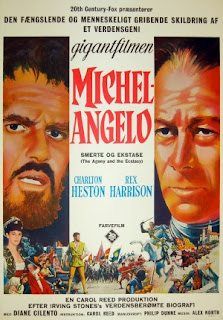Nomination: Best Sound
Nomination: Best Music, Score of a Musical Picture (Original or Adaptation) - Ray Heindorf
 |
| Photo Courtesy PetulaClark.net |
Finian's Rainbow was first performed on Broadway in 1947, and had a film been made in the 1940's or 1950's it probably would have worked much better. But by the time of the film's release in 1968, the culture had experienced such enormous shifts that the film films more like a strange relic of the past trying too hard to fit into the present day. You know when old people attempt to use modern slang to relate to their grandchildren, but it just makes them look older? That's Finian's Rainbow.
Tommy Steele plays the leprechaun Og, and his performance is a bit of a mess. My only previous exposure to Steele's work was in The Happiest Millionaire, a performance I quite enjoyed. The Happiest Millionaire was just silly enough to allow for Steele's mugging and silliness, but in Finian's Rainbow he plays the role far too broadly, and the performance crosses the line from silly to strange.
Despite all of its weaknesses, Finian's Rainbow is worth watching, if for no other reason than Francis Ford Coppola's direction. Yes, he certainly overdirects at times, but it is the overdirection of a talented youth bursting with ideas rather than the overdirection of a hack filmmaker. Coppola worked with cinematographer Philip Lathrop to free the camera, and what results is the sense of constant movement, giving the film the feel of a lively pace despite its long running time. Some of the shots Coppola creates are silly, but it was good for him to get those out of his system before the film he'd make four years later, The Godfather.
The sound work in the film by M.A. Merrick and Dan Wallin is strong, and unlike many musicals that for some reason undeservedly get nominated for sound Oscars, Finian's Rainbow was well deserving of its nomination. Ray Heindorf's score was a solid effort as well, though it never stood a chance against Johnny Green's score for Oliver!

